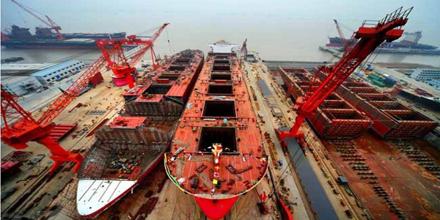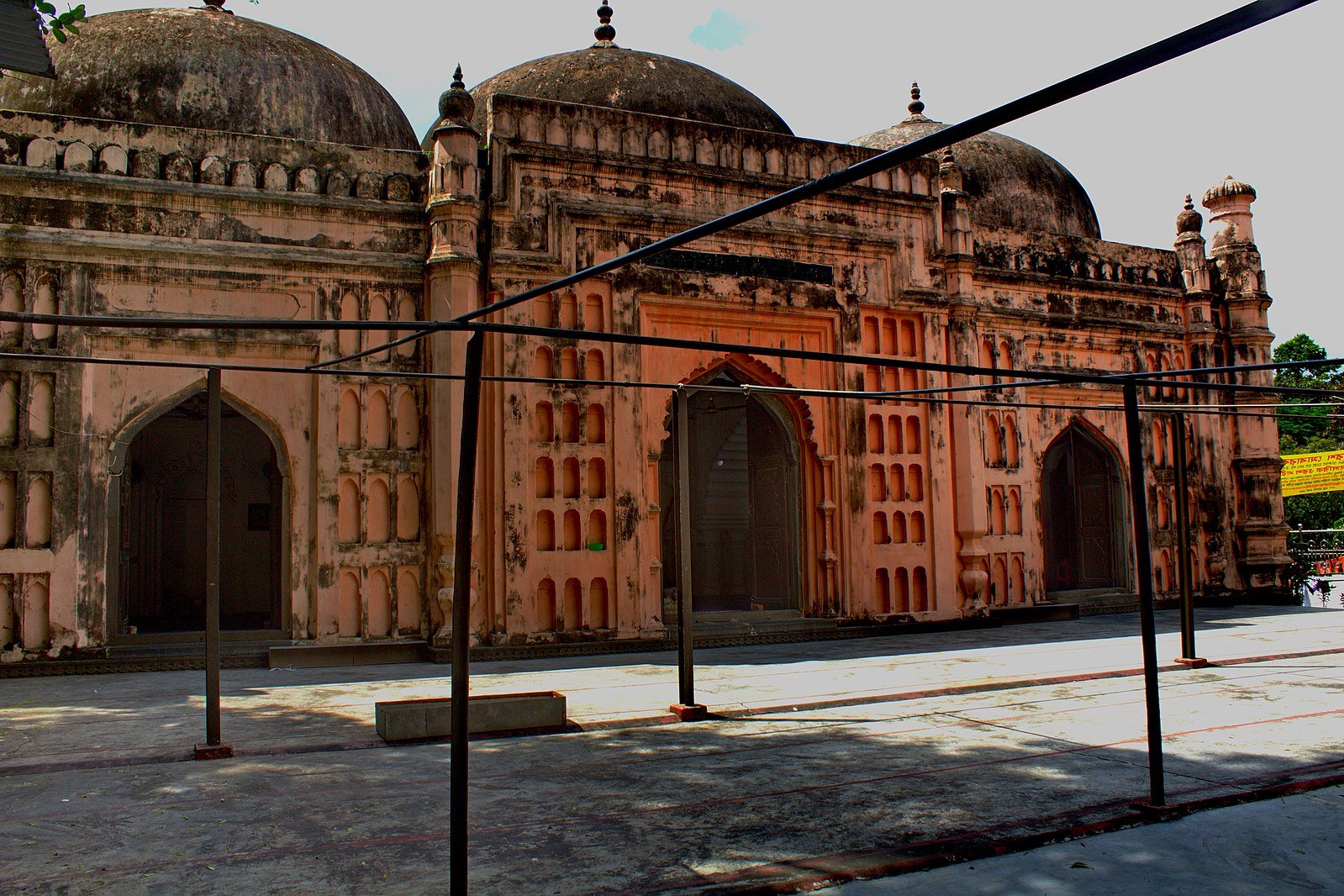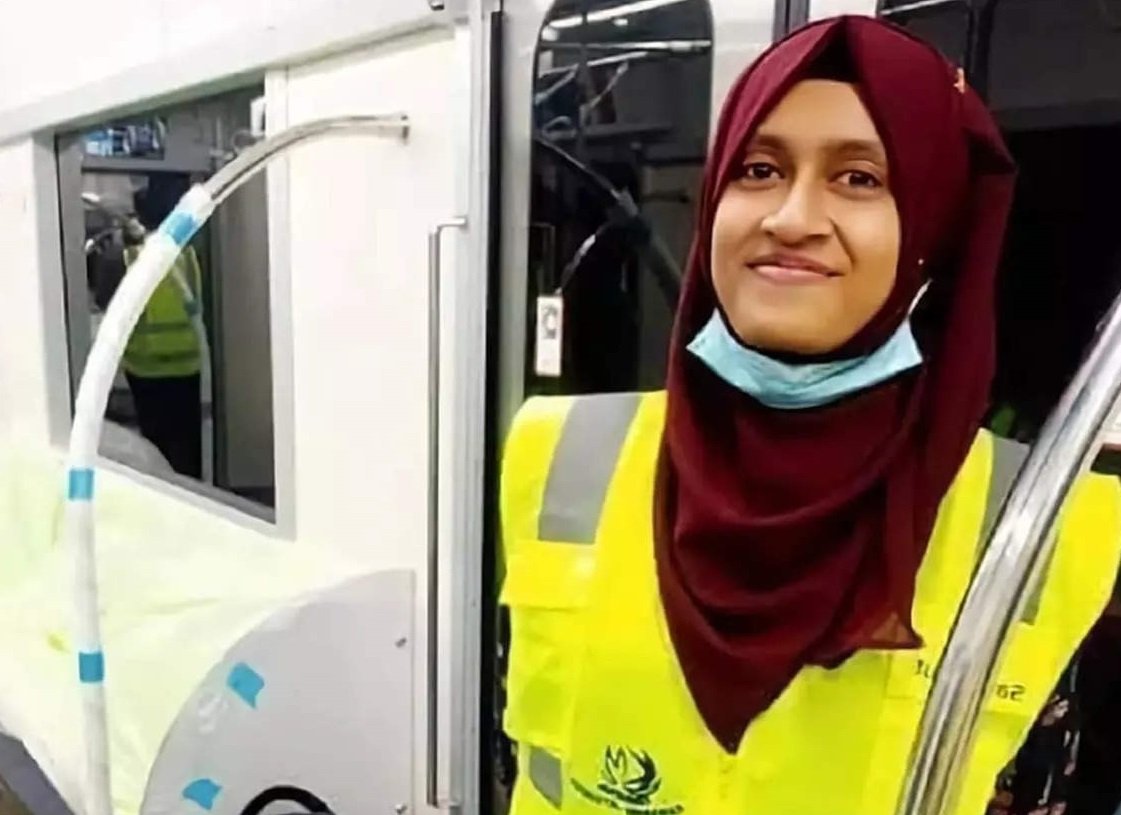Is Bangladesh Protecting Its Workers Enough?

From Rallies to Reality: Are Workers’ Rights Truly Protected in Bangladesh?
They stitch the clothes we wear, build the roads we travel, and brew the tea we sip—yet their voices are often silenced, their rights ignored. In Bangladesh, workers fuel the nation’s growth, but at what cost? On May Day, slogans of dignity and justice echo across rallies. But when the banners come down and the factories reopen, do those promises hold up? Or are workers still caught in a cycle of exploitation masked by paper-thin protections?
This article dives into the heart of that contradiction—exploring whether workers in Bangladesh are truly protected or merely pacified by laws that look good on paper but fail on the ground.
A Historical Glimpse at Labor Movements in Bangladesh
The labor movement in Bangladesh has a rich and turbulent history. During the British colonial era, workers began organizing to resist exploitation. Post-independence, labor activism intensified, particularly in the 1980s and 1990s as the readymade garments (RMG) sector exploded.
One significant moment was the 1984 jute mill workers’ strike, which highlighted worker unity and the repressive response from authorities. The early 2000s saw more organized protests, particularly within the garment industry, demanding higher wages and better working conditions.
Perhaps the most iconic example of labor-related tragedy and activism came in 2013 with the Rana Plaza collapse, which killed over 1,100 workers. The world watched in horror, and Bangladesh faced mounting international scrutiny. This event became a turning point in labor rights discussions, prompting reforms and raising questions about how much had really changed.
What Rights Do Bangladeshi Workers Have—on Paper?
Bangladesh has a reasonably comprehensive legal framework aimed at protecting workers. The Constitution of Bangladesh includes provisions ensuring the right to work, humane working conditions, and equal wages for all.
The Bangladesh Labour Act 2006, amended in 2013 and 2018, is the central piece of legislation. It covers minimum wages, occupational safety, compensation, working hours, and the right to unionize. Specific improvements post-Rana Plaza includes:
- Mandatory factory safety inspections
- Digital attendance and wage systems
- Formation of safety committees
- Freedom of association provisions
Bangladesh is also a signatory to key International Labour Organization (ILO) conventions, including:
- Convention No. 87 (Freedom of Association)
- Convention No. 98 (Right to Organize and Collective Bargaining)
In theory, these rights ensure decent work, legal protections, and freedom from exploitation. But the question remains—are these laws enforced effectively?

The Reality: Rights vs. Routine Exploitation
On paper, Bangladesh boasts a progressive labor law regime. The Bangladesh Labour Act 2006, coupled with ILO convention ratifications, paints a picture of strong protections. But for many workers, especially those in the readymade garments (RMG) and informal sectors, the lived reality remains grim. Legal rights often fail to translate into workplace justice, revealing a troubling gap between policy and practice.
Wages Below Living Standards
In November 2023, the minimum monthly wage for RMG workers was raised to Tk 12,500. While this was the first increase in five years, labor rights organizations quickly criticized the move. For many, the figure is still far below a living wage, which experts and unions estimate to be Tk 20,000–25,000.
Why the gap? Urban costs have soared — rent, groceries, transport, and healthcare all eat into a worker’s paycheck. As a result, many resort to long hours of overtime, sometimes working 10–12 hour shifts just to survive. This leaves little time for rest, family, or personal well-being, effectively trading away the basic quality of life for survival.

Suppression of Union Activity
Though the law formally allows trade unions, in practice, unionization is often met with hostility. Workers who attempt to form or join unions face harassment, surveillance, demotions, and even termination. According to Human Rights Watch, factory managers — often in collusion with local authorities — have been known to file false criminal charges, deploy police to disperse protests, or blacklist activists, making future employment difficult.
Union registration is also tightly controlled, with reports of bureaucratic delays and unjustified denials from the Department of Labour. These systemic barriers discourage worker mobilization and foster a climate of fear.
Gender Inequality and Harassment
Women make up over 53% of Bangladesh’s garment workforce, yet they often face the most vulnerable conditions. Instances of verbal abuse, groping, and quid-pro-quo harassment by male supervisors have been documented. While legal provisions call for Sexual Harassment Complaint Committees in all workplaces, enforcement is lax — and retaliation is common when women speak up.
Moreover, many female workers are denied paid maternity leave, which is guaranteed under law. There’s also a noticeable gender wage gap, with women frequently earning less than men for the same roles or being denied promotion to supervisory positions.
Unsafe Working Conditions
The Rana Plaza collapse in 2013, which killed over 1,100 workers, shocked the world and prompted major safety reforms — particularly in factories producing for international brands. Initiatives like the Accord on Fire and Building Safety and the Alliance for Bangladesh Worker Safety helped improve building standards in many large export factories.
Yet, the safety culture remains inconsistent and superficial in numerous factories, especially those operating outside global supply chains. Fire exits are sometimes blocked, electrical wiring is faulty, and emergency preparedness is lacking. The Tazreen Fashions fire in 2012, which killed over 100 workers, is a grim reminder of what happens when safety takes a backseat to profit. Sadly, similar accidents have continued since, albeit on a smaller scale.
Child Labor and Informal Sector Exploitation
While most major RMG factories now steer clear of child labor due to international audits, the informal economy remains a blind spot. Children as young as 10 can be found working in roadside workshops, brick kilns, domestic households, tea stalls, and plastic recycling units. These sectors are rarely inspected by the Department of Labour and often operate in legal grey zones.
According to UNICEF and ILO data, millions of children in Bangladesh are engaged in labor — many in hazardous conditions. Without effective monitoring or rehabilitation programs, these children remain trapped in cycles of poverty and exploitation.

Garment Industry: Backbone and Battleground
The garment industry contributes over 84% of Bangladesh’s export earnings, employing around 4 million workers. It is both the lifeblood of the economy and the epicenter of labor unrest.
Factory owners, represented by the Bangladesh Garment Manufacturers and Exporters Association (BGMEA), wield significant political and economic influence. This power dynamic often leaves workers with little negotiating room. When protests erupt—like the one in 2023 demanding higher wages—they are often met with water cannons, arrests, and factory shutdowns.
Still, the RMG sector has seen improvements, largely due to international attention and pressure. The Accord on Fire and Building Safety in Bangladesh and the Alliance for Bangladesh Worker Safety helped identify and fix thousands of safety hazards.
But even these measures are now under scrutiny. Critics argue that many factories comply only superficially to retain contracts with Western brands, not out of genuine concern for worker welfare.
Beyond Garments: Other Sectors with Hidden Struggles
While Bangladesh’s readymade garment (RMG) sector dominates headlines, other labor-heavy industries silently endure systemic exploitation. From construction to tea estates, these workers often remain invisible in policy conversations and legal protections.
Construction and Transport
Construction work is booming in Bangladesh’s rapidly urbanizing cities, but labor conditions are far from safe. Most workers are employed informally—without written contracts or social security coverage. This means that when injuries or deaths occur on the job (a frequent reality due to unsafe scaffolding, lack of helmets, and poor oversight), workers or their families receive little to no compensation.
In the transport sector, long-haul drivers and helpers endure exhausting shifts, minimal rest, and meager wages. The absence of regulated working hours and the pressure to meet deadlines increase accident risks, yet few benefit from labor union protections or health insurance. Road safety remains a major concern, not just for the public but for those behind the wheel.
Domestic Workers
Domestic work remains one of the most unregulated and invisible forms of labor in Bangladesh. Predominantly carried out by women and adolescent girls, domestic work is excluded from the Bangladesh Labour Act 2006. Despite the introduction of the Domestic Workers’ Protection and Welfare Policy 2015, the policy lacks the legal force necessary for meaningful change.
Without formal contracts, rest days, or wage standards, domestic workers often face verbal, physical, and even sexual abuse. They frequently work excessive hours for minimal pay. The risk is even higher for live-in workers, who are isolated from public scrutiny and social support networks.
Tea Garden Workers
Tea plantation laborers—many of whom are descendants of indentured workers brought during British colonial rule—remain among the most marginalized communities in Bangladesh. They typically earn below the national minimum wage and live in segregated housing clusters with poor access to healthcare, education, and clean water.
Attempts at unionizing are hampered by geographic isolation, low literacy levels, and a deep dependency on estate managers. Even when wage increases are announced, delays in implementation and lack of transparency persist. Living conditions in many tea gardens have changed little since colonial times.
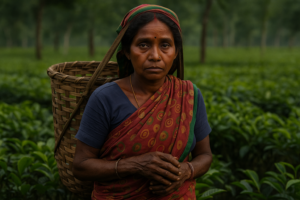
Migrant Workers
Over 10 million Bangladeshi migrant workers—mostly employed in the Middle East and Southeast Asia—form the backbone of the country’s remittance economy. Yet their rights are often trampled from recruitment to repatriation.
Many workers face contract substitution, where promised job terms are changed upon arrival. Others are subjected to wage theft, long working hours, passport confiscation, and abusive employers. In many destination countries, legal protections are weak or poorly enforced for foreign workers.
While the Wage Earners’ Welfare Board (WEWB) and the Bureau of Manpower, Employment and Training (BMET) exist to support migrant laborers, their effectiveness is inconsistent. Workers often report limited legal assistance from Bangladeshi embassies, and compensation mechanisms for injuries or deaths abroad remain bureaucratic and inaccessible.
Role of Unions, NGOs, and Media
Trade unions in Bangladesh play a critical yet limited role. Many are fragmented, politically aligned, or face internal corruption. Still, unions such as the Bangladesh Garment and Industrial Workers Federation (BGIWF) and Bangladesh Independent Garment Workers Union Federation (BIGUF) have made notable progress.
NGOs like Ain o Salish Kendra (ASK), BLAST, and Naripokkho provide legal aid, run awareness campaigns, and pressure authorities. International watchdogs like Clean Clothes Campaign and Human Rights Watch keep global attention focused.
Journalists and social media activists have played a pivotal role in exposing abuses. Viral videos of worker beatings or interviews with fired union leaders have prompted national outrage and, occasionally, action.
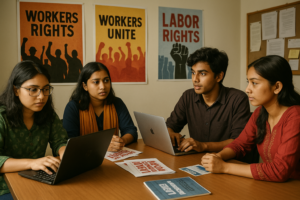
The Government’s Role—Protector or Perpetrator?
The government often presents itself as a guardian of workers’ rights, especially when facing international scrutiny. Ministries announce reforms, labor courts are introduced, and committees are formed.
But actions frequently contradict the rhetoric. When workers protest, the state often responds with:
- Police crackdowns
- Surveillance of organizers
- Criminal charges for “inciting unrest”
The government’s closeness to factory owners—many of whom are also politicians—creates a conflict of interest. Moreover, the Department of Inspection for Factories and Establishments (DIFE) is under-resourced and understaffed, limiting effective oversight.
That said, some progress has been made. In 2024, the government announced plans for a national digital platform to register and track workers’ employment and wages, but implementation remains slow.

Global Pressures and the Corporate Social Responsibility Mirage
Bangladesh’s export-led growth model relies heavily on Western brands like H&M, Walmart, Zara, and Primark. These brands often boast about Corporate Social Responsibility (CSR) and publish supplier codes of conduct.
But many fall short of ensuring their supply chains are truly ethical. Audits are often pre-announced and fail to capture coercion or abuse. Even when violations are reported, suppliers rarely face real consequences unless a public scandal erupts.
After Rana Plaza, initiatives like the Accord and Alliance were launched to address safety. But they were time-bound, and their transition to local bodies like the RMG Sustainability Council (RSC) has sparked concerns about transparency and independence.
Greenwashing and performative CSR continue to plague the industry. Ethical certifications are issued even as workers report low wages and harassment. Without pressure from consumers and media, many brands prioritize profit over principle.
Hope in Reform—But Is It Enough?
Despite the challenges, there are signs of hope and resilience. Some factories have adopted:
- Biometric attendance systems
- Digital wage payments to reduce wage theft
- On-site health clinics and child care
- Gender-sensitive grievance redress systems
Initiatives like Better Work Bangladesh, a collaboration between the ILO and International Finance Corporation, are helping improve compliance and worker-employer dialogue.
Younger union leaders, many of whom are women, are also stepping up. Workers are increasingly using social media to raise their voices. Legal aid from NGOs and labor rights advocates has saved many from unjust firings and harassment.
But unless these positive practices become widespread—and legally enforced—the reforms remain the exception, not the rule.

From Rhetoric to Reality
Bangladesh has made undeniable progress in recognizing workers’ rights. Laws have improved, awareness has grown, and global scrutiny has prompted some reforms. Yet, the daily experiences of millions still reflect a reality where rights are fragile, protections inconsistent, and justice delayed.
Until protests don’t end in police batons…
Until minimum wages become living wages…
Until unionizing doesn’t risk your job…
Until the slogan “Shromiker Odhikar” (workers’ rights) becomes a lived truth…
…the journey from rallies to reality remains incomplete.
For real change, Bangladesh needs not only legal reform but a cultural shift in how we value workers—not as disposable labor, but as the foundation of the nation’s growth.
While Bangladesh’s garment sector plays a crucial role in the country’s economy, the complexities of labor rights violations within the industry often overshadow its global success. For a deeper understanding of how Bangladesh emerged as a global garment powerhouse despite these challenges, check out our detailed exploration in “From Jute to Jeans: How Bangladesh Became a Global Garment Giant” here.

